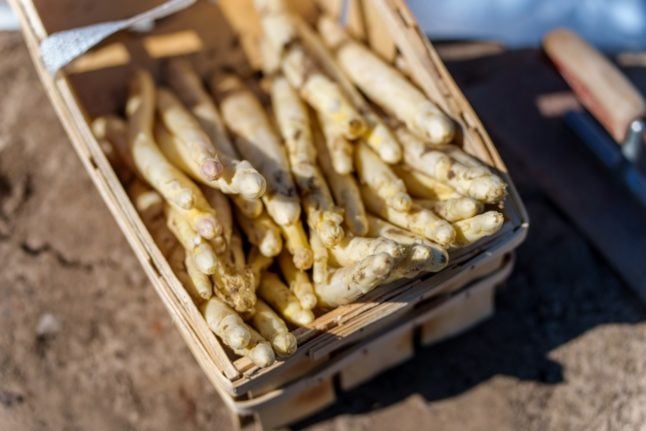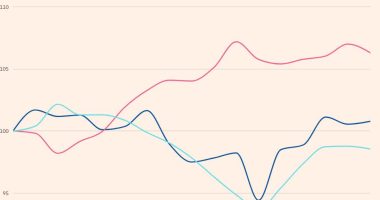The sun is shining and the first blossoms have appeared on the trees, which in Germany can only mean one thing: the start of Spargelzeit.
This fleeting time of year kicks of around the middle of April, when the first batches of white asparagus are harvested, and it usually ends on June 24th, in time for the start of summer. As German farmers like to say: “Kirsche rot, Spargel tot” (cherries red, asparagus dead).
But the brevity of the season doesn’t dampen the enthusiasm for Spargel. In fact, it’s a licence for Germans to go asparagus-mad for these few months of the year, stocking up on “white gold” at farmers’ markets and roadside stalls and tucking into their favourite Spargel dishes at restaurants and spring festivals.
So, how did this rather humble vegetable become so beloved in Germany? And why is it such a powerful cultural symbol?
Here are six things you may not know about the German obsession with Spargelzeit.
Spargel has a long history in Germany
If you have the feeling that Germany just wouldn’t be Germany without Spargel, you’re partially right. Roman conquerors likely brought the vegetable with them as they settled across huge swathes of Europe, and there’s evidence to suggest that it was being cultivated and consumed in Germany as far back as the 2nd Century.
With the collapse of the Roman Empire, however, knowledge of how to grow asparagus likely died out in central Europe, and only returned to Germany centuries later. Historians originally thought that Italian monks travelled over the Alps into Germany and brought asparagus with them when they did so – but according to more recent discoveries, there could be another explanation.
Advertisement
In fact, researchers now believe the German love affair with Spargel can be traced back to a 15th-century Italian princess by the name of Barbara Gonzaga von Mantua. After marrying Eberhard im Bart, the Count of Württemberg-Urach, Gonzaga moved from her home in Italy to Schloss Urach near Stuttgart to live with him – but as her letters home reveal, she absolutely detested Swabian food.
Apparently, the princess asked her mother to send her the asparagus and seeds that she missed from home – something to counteract the stodgy Swabian diet. This could mark the moment that Spargel was reintroduced to Germany way back in the 15th or 16th century.
Since then, technological breakthroughs have cemented the popularity of the vegetable: in the 19th century, preserving it in jars meant people could enjoy it all year round and in the 1980s, farmers discovered that covering crops in plastic could allow them to cultivate enough Spargel for the masses. These days, there are almost 1,500 Spargel producers in Germany, and the average German consumes 1.5kg of the stuff per year.
READ ALSO: German word of the day: Spargelzeit
Seasonal eating is the name of the game
Spargelzeit is just one of many examples of Germany’s love of eating seasonal produce: from rhubarbs in April to pumpkins in August, you can trace the changing of the seasons from the variety of dishes on your plate.
For people who are used to turning up at a supermarket in Britain or the United States and seeing every variety of fruit and vegetable imaginable on the shelves, this can feel a little old fashioned – but with our renewed awareness of the benefits of eating local and seasonal products, Germany is actually pretty ahead of the curve.

A basket full of Spargel on a farm in Hesse. Photo: picture alliance/dpa | Andreas Arnold
The magic of Spargelzeit partly relates to this trend. As spring arrives, it’s a symbol of the rich bounty you can reap from the earth – and the relatively short season gives you an excuse to (over)indulge on this yummy treat.
So next time you peruse the Spargelkarte (asparagus menu) in your favourite German restaurant, take advantage of the season and make sure you get your fill while you can.
There’s a fair amount of local pride
It wouldn’t truly be a German tradition if there weren’t a healthy bit of regional rivalry involved – and you’ll notice that wherever you go at this time of year, the local variety of Spargel reigns supreme.
In Bavaria, for example, you’ll see local supermarkets and farmers’ markets feverishly advertising their Schrobenhausner Spargel, but hop over to Baden-Württemberg and you’re likely to see Swetzinger Spargel on the menu. In North Rhine-Westphalia, meanwhile, expect to hear locals singing the praises of their homegrown Münsterländer Spargel, while in Berlin and Brandenburg, it’s Beelitzer Spargel all the way.
For these towns and communities, it often feels like the local economy is built on Spargel – and their local identities are built around it as well. In Beelitz, for instance, visitors are welcomed into the Spargelstadt by little smiling asparagus figurines, and if you turn up during Spargelzeit, you may well encounter the town mascot Spargelino doing his rounds.
Beelitz. Das Beelitzer Maskottchen „Spargelino“ ist jetzt Gärtner. Ausgestattet mit Schürze, Schirmmütze und Werkzeug-Gürtel kommt der Knuddelspargel künftig daher #Zauche #Spargelino #LAGA #NaturkitaSonnenschein #Peter_Röders #Fabula https://t.co/eUuTHZiuFO pic.twitter.com/TxvVZQs6vd
— Zauche 365 (@Zauche365) June 3, 2020
It’s not just a vegetable – it’s a cultural icon
Yes, people love the taste of Spargel, but take a look at the customs and traditions that surround it and you’ll realise that this is about more than just a nutritious and buttery snack.
Particularly in rural areas, Spargelzeit is really a celebration of the start of spring and an excuse to organise social and cultural events as the weather gets warmer and the evenings get longer.
Advertisement
This is the time of year when folk festivals start popping up across the country, when Germans organise cycling trips to the countryside with a pit stop at their favourite Spargelhof to tuck into some ham, potatoes, asparagus and hollandaise sauce, and when some Spargel-growing regions select a young woman to become their Spargelkönigin (Spargel queen).
In these communities, getting selected as this year’s Spargelkönigin is a huge honour, not to mention a pretty intense gig. The asparagus queen has an almost non-stop schedule of press events and appearances, serving as the youthful embodiment of the newly arrived spring season.
READ ALSO: Queen Asparagus reigns supreme over Germany
There are numerous health benefits
Asparagus has been valued for its health-giving properties for thousands of years – so much so that the ancient Greeks even considered it a sacred plant.
Advertisement
With its high water content, it’s incredibly low in calories but high in vitamins and minerals, making it the perfect compliment to Germany’s carb- or protein-heavy staples like pork and potatoes. It also happens to be high in antioxidants, so it’s ideal for munching on after a heavy workout.
Es ist Spargelzeit 🥳🥳 pic.twitter.com/A0yktFzX9g
— 🇮🇱 Rechtsdirektor 🇺🇦 (@Rechtsdirektor) April 12, 2023
Unfortunately, since photosynthesis doesn’t happen to the same extent in Germany’s trademark white asparagus, it’s slightly less vitamin-rich than the green version. But if you prefer the more delicate flavour of classic white Spargel, there’s certainly nothing to stop you tucking in, since it’s still an immensely healthy treat.
It doesn’t always require hollandaise
If you go to any roadside stall at this time of year and order some Spargel, it’s likely to be served to you in the classic way, with some ham, boiled potatoes and lashings of buttery hollandaise sauce.
This is undeniably a delicious way to enjoy Spargel, but if you want to be a bit more adventurous this season, why not try out some new ways to enjoy the so-called vegetable of kings?
Advertisement
Whether you turn it into a light side dish for a steak or schnitzel or find a way to incorporate it in a refreshing summer salad, there are a million ways to enjoy asparagus. If you want to kill an hour or two, try Googling “Spargel Rezepte” and unlock a veritable treasure trove of culinary ideas – all dedicated to our humble spear-shaped friend.
Here are some to get your started:
Or try out The Local’s easy-peasy tart recipe below:
Spargelzeit recipe: Easy white and green asparagus tart
If you’re trying out any of these at home, just don’t forget your Spargeltopf: a uniquely long pot dedicated exclusively to cooking asparagus, and possibly the most German thing on the planet.
Want to hear more about Germany’s love of Spargel? Then don’t forget to tune into The Local’s Germany in Focus podcast on April 14th, where we unpack the popularity of asparagus and Germany’s Spargelkönigin tradition.
Read More: World News | Entertainment News | Celeb News
Locals








